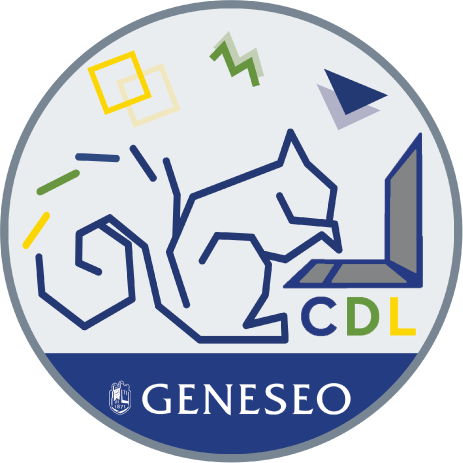Can a small change really make a big difference?
17 Mar 2021
 “Measurement,” by Flickr user Batara (Adityo Sastromuljono), CC BY-NC-ND 2.0
“Measurement,” by Flickr user Batara (Adityo Sastromuljono), CC BY-NC-ND 2.0
Editor’s note: During the January 2021 Intersession, as part of Geneseo’s project of becoming an antiracist college, nearly a dozen faculty taught courses that either focused centrally on issues of racial justice or incorporated those issues via dedicated modules and interwoven content. Professor Harrigan’s post is one in a series in which faculty reflect on their objectives and experience in these courses. Previously, Professor Melanie Medeiros described her experience teaching Race, Racism and the Black Experience in the Americas.
I am a relational communication teacher-scholar and a growth seeker. At the heart of my teaching is a value for dialogue, which is a unique communication process that prioritizes multivocality, listening, reflection, and connection.
When I was presented with the opportunity to support the college’s value of inclusion through integrating antiracist content into my January 2021 intersession online course, I quickly jumped at the chance knowing that the process would foster my personal and professional growth. With feelings of excitement and apprehension, I began the work.
What course should I choose? Intercultural Communication. It is a perfect fit.
In what unit should I integrate content on antiracism? The unit on “Histories and Identities” seemed right since in this unit we explore various identities, the relationship between history and identity, and the role of communication in various identity-related experiences. Exploring the role of communication in antiracism seemed like a natural extension.
What is my goal? With one of my favorite quotes from Maya Angelou in mind (and on my syllabus) — “Do the best you can until you know better. Then when you know better, do better” — I knew I wanted to equip us to do better, personally, relationally, and as members of multiple systems including the Geneseo community.
How will I accomplish my goal? With apprehension, I pondered: How can I do this in a way that is mindful, supportive, respectful, engaging, meaningful, and growth-promoting when I am situated within my own identities? How can I do this when I also have so much to learn?
I knew I wanted to maintain the module structure that I use throughout the course. After providing an overview, I ask students to engage deeply with a variety of texts, build and demonstrate topic-centered vocabulary, engage in dialogue, and synthesize materials in the form of an assignment.
I started with the basics.
- I incorporated additional texts. I introduced them to Kendi’s perspective on antiracism. I provided information about Geneseo’s goal of becoming an antiracist college. I shared antiracism resources available through the National Communication Association, the Department of Communication, and the Teaching and Learning Center.
- I centered relevant concepts in my overview and quiz (in retrospect, I could have done this better).
- I adjusted the discussion prompts to include a specific focus on the role of communication in racism and antiracism.
- I chose to keep the synthesis assignment the same since it involves a narrative reflection about identity.
Yet, I knew something more was needed.
As I continued to wonder, How can I do this in a way that is mindful, supportive, respectful, engaging, meaningful, and growth promoting when I am situated within my own identities? How can I do this when I also have so much to learn?, other questions that I had been pondering for semesters joined them. How can I encourage richer discussion responses — ones that go beyond compliments and expressions of agreement? How can I encourage students to engage with every post for its value rather than limiting themselves to the one to which they feel confident responding? How can I move beyond valuing a growth mindset to actually supporting it?
These questions led me to reflect: When do I experience the most meaningful learning and the most significant growth? Why am I frustrated with the quality of discussion responses? How do I want or expect responses to function?
Then it hit me. I realized that I wasn’t using the discussion forum for its full potential. My current strategy wasn’t aligned with my value for dialogue and my goal of supporting a growth mindset. I began to wonder: What if I made a small adjustment and changed the requirement from submitting a post and a response (which has been my process for years) to submitting an initial post and a repost (what I am currently calling a “growth post”)? Could this small change shift students’ perspective from “What can I teach you?” to “What did you teach me?” Might this small change encourage students to broaden and deepen their listening? Might the small change showcase that our perspectives are situated in time and space and have the potential to develop and grow and change with more knowledge and deeper reflection? Might this small change illustrate that we all have things to learn? Might this small change normalize the progressive quality of learning? Might learning about others’ growth inspire even more reflection and potentially even more growth? Could a small change really make a big difference?
With hope and optimism, I tried it. I found the growth posts to be richer and more personal than the response posts I received in past semesters. I saw students acknowledging points they had previously overlooked. I witnessed students confirming the value of each other’s voice. It seemed like a good decision.
What did this opportunity teach me?
- Aligning values, goals, and choices is important but not always easy.
- Reflection is necessary for growth.
- We are all teachers and learners.
- Even the smallest change can make a big difference.
I hope my students learned these lessons, too!
